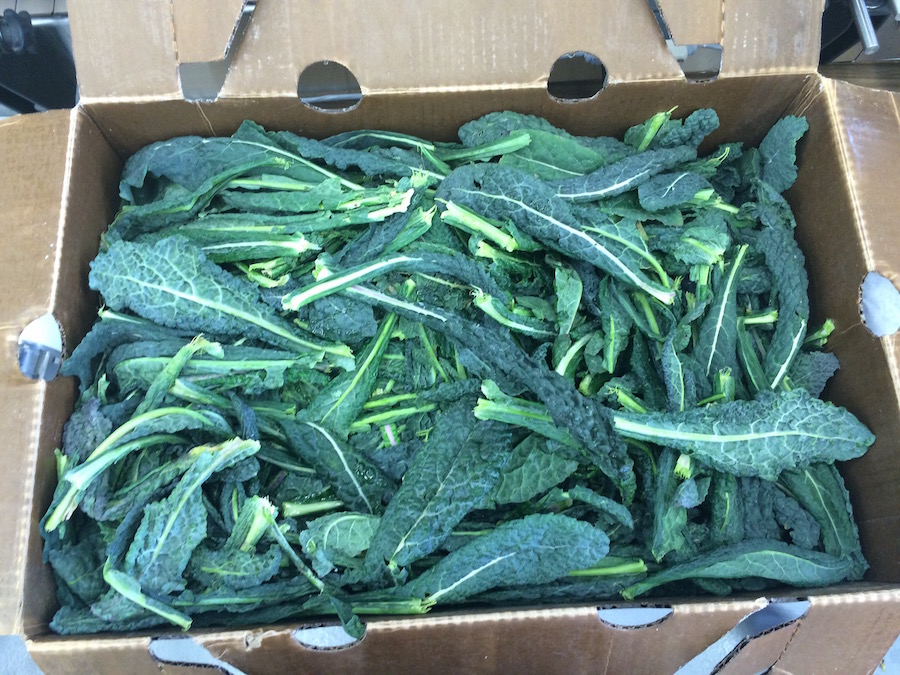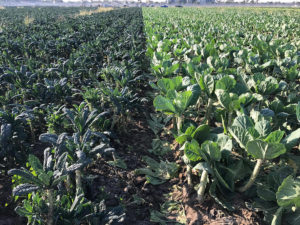
Food waste is a colossal problem — in the United States and worldwide. A quick Google search reveals some shocking statistics:
- Roughly one-third of the food produced in the world for human consumption every year — approximately 1.4 billion tons — gets lost or wasted (source).
- More than 10 million tons of produce go unsold each year due to cosmetic imperfections (source).
Food waste is both an economic issue and an environmental issue. Fortunately, entrepreneurs and innovators like Christine Moseley are stepping up to do something about it.
Moseley encountered one of the reasons behind the global food waste epidemic first-hand. She spent 12 years in the food and logistics industries, where she first noticed inefficiencies in the supply chain.
The effect of these inefficiencies really hit home when she was working to scale one of the first cold-pressed juice companies in the country. The company produced high-quality juices that consumers loved. But they faced a huge challenge — due to the high cost of produce, the price tag was very high: as much as $13 per juice!
Moseley dug in and figured out why the beverages cost so much…the company was paying top dollar for perfect-looking produce just to immediately process it.
That’s when Moseley decided that there had be a better way. So, she created Full Harvest, an online marketplace that makes it easy for processors and other food and beverage produce buyers to purchase imperfect or surplus produce. The tech platform solves two problems: it allows farmers to sell products that would otherwise go to waste, and it brings down the raw materials cost for manufacturers — like juice companies — that don’t require perfect produce.
Full Harvest is the first solution of its kind, and Moseley has already been recognized by the industry for her contribution — among several awards, she was a finalist for the Unilever Young Entrepreneurs Award in 2017.
Food Industry Executive wanted to learn more about Moseley’s crusade against food waste, so we spoke with her about her roots, her inspiration, Full Harvest’s mission, and what she sees for the future of the food supply chain.
What was your inspiration for Full Harvest?
CM: Three years ago, I moved to California with a mission to figure out how I could lower the cost of healthy food production and innovate along the food supply chain. That’s when I started uncovering the crazy food waste statistics. I was shocked that no one was talking about them.
Having experienced the whole food supply chain with the exception of farms, I decided to start by visiting some of the nation’s largest farms. On one trip, I found myself standing knee-deep in a field of romaine leaves. The farmers had just harvested the romaine hearts, which is only 25% of the plant. The other 75% was left behind because grocery stores won’t buy that part or they were imperfectly shaped. I thought to myself, “This is perfect romaine. This is what juicers and other food and beverage companies should be using.” That’s when I decided to start Full Harvest.
How did you get started?

I began looking into why food waste is so rampant at the farm level. Simply put, it’s because growers didn’t have an easy, low-risk way to sell surplus or imperfect product. There was no supply chain set up to incentivize them to sell it. Instead, they’re highly incentivized to sell to grocery stores, where there is high demand. With the current supply chain options, they don’t have time or resources to sell anything else.
That’s when I realized farmers needed a marketplace where, with a touch of a few buttons, they could get additional sales and offload surplus product. It’s a win-win-win. Buyers are saving 10%-40% on their produce with Full Harvest, farms are getting additional revenue streams, and we’re helping solve the massive food waste problem in a scalable way.
Sourcing sustainable produce wasn’t always a priority for the food and beverage industry. Why now?
At first, no one knew about the food waste problem. A year and a half ago when the food waste stats came out and I was pitching for investment money, people were just starting to understand the gravity of the issue. Now, it’s one hottest topics out there. A report that just came out said that reducing food waste is the third largest way to reduce climate change.
Industry experts predicted the organic trend, and now it’s huge. Now experts think consumers are going to rally around sustainable sourcing because consumers care about food waste, especially Millennials. Millennials want to purchase from sustainable companies.
Your platform aggregates produce. What’s it like for users?
Imagine an ‘Amazon-like’ purchasing experience. We are completely changing the way that food and beverage companies purchase produce. Previously, companies had to deal with multiple distributors over phone calls, texts, emails, and paper invoices. There was a lot of room for error.
When using Full Harvest, users can literally go onto the website, place their order within a minute, and we take care of the rest. It’s all automated. No paper, no calling around to a bunch of people, no orders to check up on. It’s not just a huge time-saver, there’s a benefit to using technology in terms of metrics, traceability, and accuracy too.
What are your most popular items?
We have some of the most sustainable root vegetables and leafy greens out there because we’ve innovated with growers on their harvesting practices to capture more on the field. But some of our larger volume items are the items processors use as bases: apples, cucumbers, celery, and so on.
Food and beverage companies have been able to use our current items in a wide range of products so long as they process their ingredients in some way.
What are your biggest challenges in forming partnerships with food and beverage companies?
At first, companies are drawn in because the platform saves them money and sourcing sustainable produce is an attractive differentiator for their business. But once they start buying on the platform, it ends up saving them time and logistical headaches. Companies love us and we’ve had close to 0% churn.
But not all companies are so open-minded from the get-go. They’re used to doing things a certain way. It will take late adopters a little bit more time to be open to a new, better food supply chain once they see others experiencing the benefits.

We’ve also had companies assume that we won’t always have consistent supply or that our supply won’t be up to spec. We still sell top-quality produce – it’s simply just ugly or surplus. And all of our products have consistent, year-round supply. And as far as quality goes, what companies get from Full Harvest is almost always fresher than what they get from a traditional supply chain because it’s shipped directly from a farm and doesn’t sit around in a warehouse.
Taking advantage of the Full Harvest platform is a no-brainer. A food or beverage company can help solve a massive global issue with their buying power, all while saving money, time, and energy. The food supply chain is going to change, and we are the ones that want to change it, so why not be part of it?
Where is Full Harvest available right now?
We have farms in California, Washington, Arizona, Mexico, and Costa Rica. Our buyers are in California, Texas, and Chicago. We’re expanding to Colorado and Florida and plan to go national soon.
What’s the goal for Full Harvest over the next decade?
Our vision is to become the go-to marketplace for businesses to purchase produce. On a more fundamental level, we want to change the food supply chain so that everything that is grown and edible is consumed. 0% food waste and 100% consumption is possible. It’s just a matter of innovation, tech, and businesses adopting Full Harvest.
———————————————–
To learn more about Full Harvest and how you can buy or sell imperfect produce through the platform, visit their website. It can take as little as two weeks to get up and running.
For more on how tech companies are impacting the food supply chain, check out our interview with David Stone of Forager, a digital platform that connects local buyers and producers.







